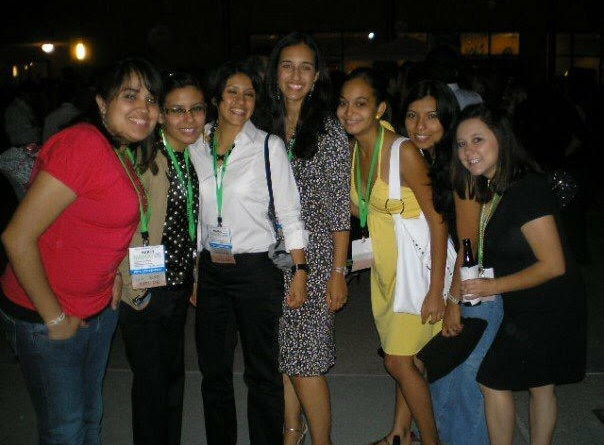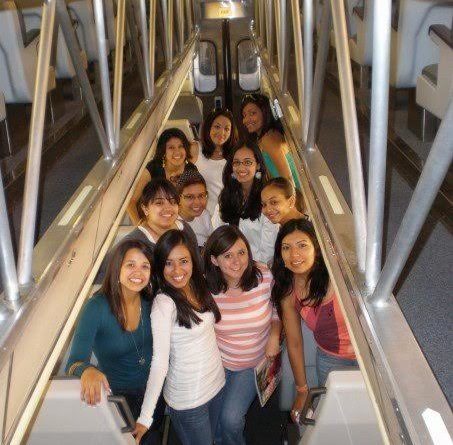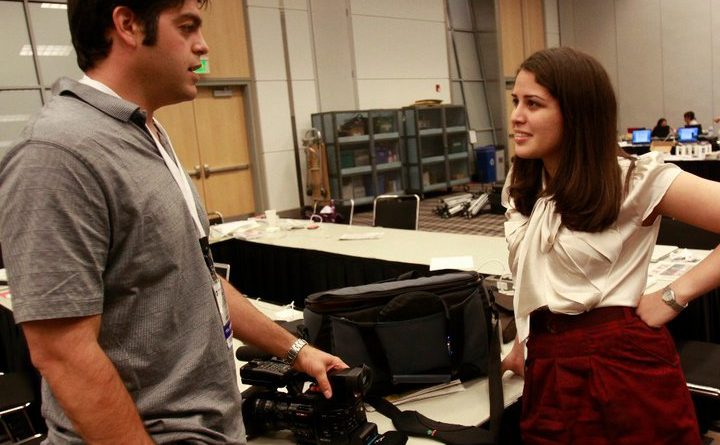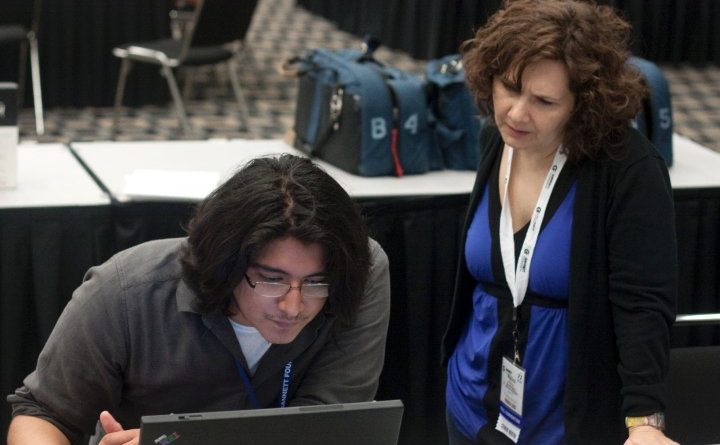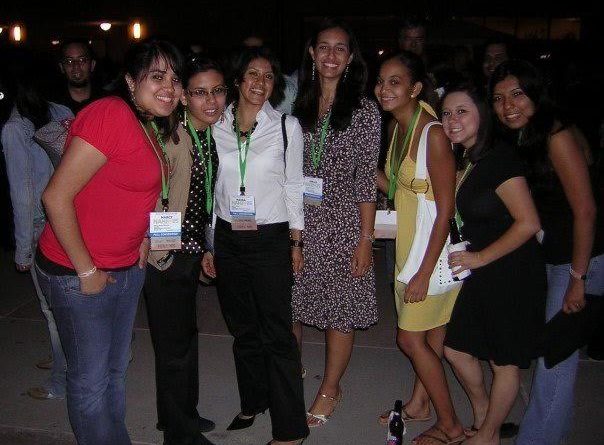NAHJ Student Project: One idea, 30 years, countless success stories
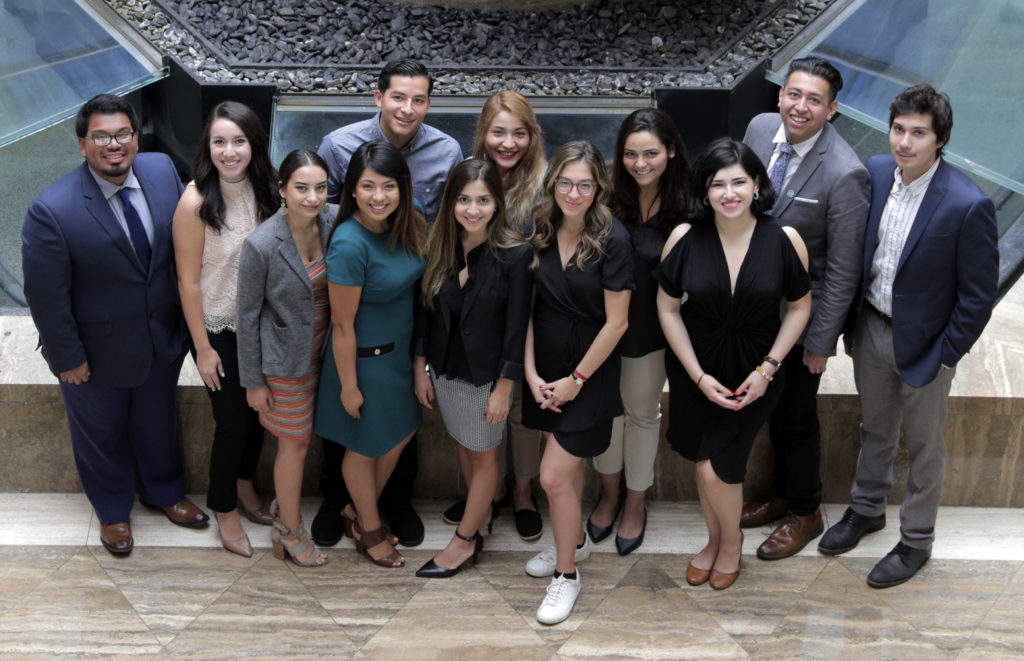
Maggie Rivas-Rodriguez doesn’t remember whose idea it was.
But it originated in Los Angeles in 1987, when Rivas-Rodriguez went to Ernest Sotomayor, then co-director of the National Association of Hispanic Journalists’ convention, and told him the annual event needed inform attendees about conference happenings. What better way than a newspaper, the two figured.
“We all agreed that it would be a good idea,” Sotomayor said in a recent phone interview.
They started working to launch a publication at the 1988 convention in Dallas. “There were a number of things that had to be figured out,” Sotomayor recalls, like where to place the newsroom; who would print the publication; how they would print the proofs to build the newspaper; what they would write stories on; who would shoot photographs.
Most importantly: who would staff the paper and who would manage the staff – the logistics of any newspaper being started from the ground.
Time and ambition unfolded the answers to their questions.
Rivas-Rodriguez recruited college students and assembled a team of journalists to guide them, she said. A vacant restaurant in the conference’s Hyatt Regency hotel became their newsroom. They rented Mac computers with floppy discs, crafted a news budget and produced a paper each day of the conference. Every night after the print run of its southwest edition, The Wall Street Journal printed what became the first edition of The Latino Reporter.
“It was a hit from the very beginning because it was a great way to communicate,” said Rivas-Rodriguez, who is now a journalism professor at the University of Texas at Austin. “And it was a wonderful thing for our students.”
Thirty years later, the Student Project has gone through changes and obstacles but is still informing attendees of NAHJ’s annual conference and providing a real-world newsroom experience to a team of student reporters that staff it.
“I wouldn’t be here where I am in this job today if it weren’t for the projects and the wonderful and talented people” who helped me learn, said Jason Gonzales, co-director of the 2018 NAHJ Student Project and a 2010 alumni of the publication who currently covers education for The Tennessean. “I am so happy that it is still around and I want to keep it going strong.”
The premise of the project has not changed much after three decades. The staff is still made up of students who, paired with a mentor, cover the annual convention inside out, as well as other issues of interest to the Hispanic community. Mentors take time away from their jobs, often taking vacation time and paying for some expenses.
“It can be real high stressed,” said Francisco Vara-Orta, who was a student reporter in 2005 in Fort Worth, Texas.
Students work side by side with some of the country’s best editors and for an audience of potential employers and colleagues. “You felt this intense pressure but it was also exciting,” Vara-Orta said.
Vara-Orta said the project was helpful in three ways: Getting edits and guidance from seasoned editors, reporting outside of your immediate community and fostering relationships that last longer than the convention weekend.
Of course, it hasn’t always been a smooth, 30-year sail.
Once upon a time the student project was much larger with The Latino Reporter as its print publication, and a separate radio and video platform, El Noticiero, and a student staff of dozens.
Mekahlo Medina, an anchor and reporter at NBC LA and former president of NAHJ, is a product of the project. He was first part of The Latino Reporter in 1995 as a student. He eventually became a mentor and then, in 2007, director of the project with a specific task: combine the three platforms.
“Online journalism was starting to percolate,” Medina said. “Our goal was to get to that point where all content was online.”
The organization was trying to make do with a smaller budget, and effectively a smaller student staff, amid the recession, Medina said. In hindsight, the convergence foreshadowed where the industry was headed – multimedia journalism.
“I don’t think I thought of it as a tumultuous time, I often thought of it as the new frontier,” he said. “I always felt like that was the challenge – kind of being a sales person for the future of journalism.”
In his three-year stint leading the student projects, Medina started the merger and got the different platforms working out of the same assignment desk.
By the time Gonzales was a student in 2010 in Denver, the staff size was still large but the newsroom was already transforming into the multimedia hybrid it is today, he said, remembering his time working on a story that welcomed attendees to Denver.
“As a student it was a ton of work. It was hard. They ask a lot of you. And you learn a lot,” he said. “But as a mentor … it’s two times as much work as I would have thought.”
This year, one of Gonzales’ students is reporting a story welcoming conference goers to Miami. “It’s fun having it come back a full circle” he said. “Kind of have that in my mind of, “OK, how did I do this and now eight years later [can] guide her” with my experience.
Success stories among The Latino Reporter community are common, but they aren’t always immediate, said Carlos Ávila Gonzalez, a photographer and multimedia producer for The San Francisco Chronicle who has been a mentor for nearly a decade. Gonzalez said he still receives texts or calls from past students when they land a job or internship.
“You’re not always going to see that immediate pay off,” he said. “It’s a long-term dividend. It’s a long-term success. And we see it more often than not.”
With no internships on her resume as a university junior, Esmeralda Bermudez wanted to sit and cry when she introduced herself to recruiters at a conference and they told her she was inexperienced and “green,” she recently recalled.
There was one recruiter – from The Oregonian – who spoke with Bermudez, though.
When she returned to the conference the following year with more experience under her belt – and as a reporter for The Latino Reporter – the recruiter remembered how lost she was when they met and ended up hiring her as a two-year intern.
“It was a combination of all that terror and curiosity that created the determination in me to push and to explore and to not give up,” said Bermudez, who is now a staffer at The Los Angeles Times writing about the lives of Latinos and immigration – her dream job.
The experience at the conference isn’t lost on Bermudez.
“It is really important for me to get back and give back,” she said of possibly mentoring students in the future, once her own children are a bit older. “The opportunity that is given to students at The Latino Reporter, from all over the country, is so crucial.”
Looking back at the time and effort she invested to lift the project off the ground, Rivas-Rodriguez is proud NAHJ led the way in being the first minority journalist organization to have a student project.
NAHJ, Rivas-Rodriguez said, showed what its members can do.
Email: LatinoReporterOfficial@gmail.com
Twitter: @serrano_alej
